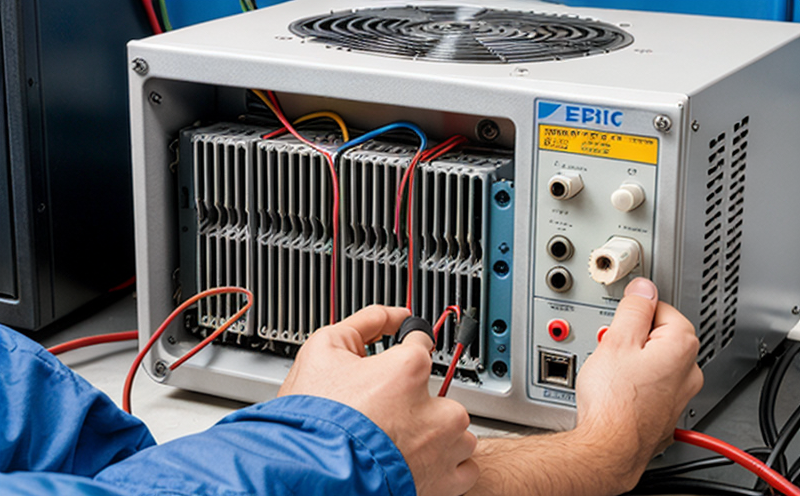IEC 60092-712 Fault Ride-Through Testing of Power Systems
The IEC standard 60092-712 establishes a comprehensive framework for the testing of power systems to ensure they can withstand transient disturbances and maintain continuity of supply. This service is specifically designed to evaluate how electrical and power systems perform under fault conditions, ensuring reliability in critical environments like marine vessels.
The test procedure involves simulating faults that may occur during operation, such as short circuits, overloads, and voltage dips. These scenarios are meant to mimic real-world occurrences that challenge the robustness of on-board electrical systems. The objective is to verify whether these systems can ride through the fault without failing or causing a significant disruption in power supply.
For marine & ship equipment testing, this service is crucial as it helps ensure compliance with international standards and enhances safety at sea. By subjecting the system to controlled faults, we can identify potential weaknesses that could lead to failures during actual operation. This proactive approach allows for necessary adjustments before deployment, thereby reducing risks associated with electrical malfunctions.
The test setup typically includes a controlled environment where various types of faults are introduced into the power circuit. Sensors and monitoring devices continuously record data throughout the testing process, providing detailed insights into system behavior during fault conditions. This information is invaluable for refining designs and improving overall performance.
One key aspect of IEC 60092-712 involves evaluating the transient stability of power systems under transient disturbances. Transient stability refers to the ability of a power system to recover from sudden changes in operating conditions without losing synchronism or collapsing altogether. This is particularly important for marine applications where even brief interruptions could have serious consequences.
The testing process also includes assessing the dynamic response characteristics of the tested systems, which describe how quickly and accurately they return to normal operation after being subjected to a fault. A fast recovery time not only ensures continuous power supply but also minimizes downtime, enhancing operational efficiency.
Another critical factor is the evaluation of protective devices installed within the electrical system. These devices are designed to detect faults and isolate affected parts from the main circuit to prevent cascading failures. Testing these components under fault conditions helps validate their effectiveness and reliability.
In summary, IEC 60092-712 Fault Ride-Through Testing of Power Systems is an essential service for ensuring the safety, reliability, and compliance of marine & ship equipment. By simulating real-world faults and analyzing system performance, this testing process provides critical data that informs design improvements and enhances overall operational integrity.
Industry Applications
| Application | Description |
|---|---|
| Marine Vessels | The primary use case for IEC 60092-712 is to test power systems on marine vessels, ensuring they can withstand transient disturbances and maintain continuity of supply. |
| Offshore Platforms | This service also applies to the testing of electrical systems used in offshore platforms, where reliability is paramount due to the remote nature of these installations. |
| Shipyard Testing | During ship construction and repair, this test helps ensure that all installed electrical equipment meets required standards before commissioning. |
| Research Vessels | Evaluating the power systems on research vessels ensures they can operate reliably in demanding conditions while conducting critical scientific studies at sea. |
International Acceptance and Recognition
The IEC 60092-712 standard is widely recognized across the global maritime industry for its stringent requirements regarding fault ride-through capabilities of power systems. Many regulatory bodies, including classification societies and national authorities, mandate compliance with this standard to ensure safety and reliability in marine operations.
Classified shipyards often specify IEC 60092-712 as part of their quality management processes for new vessel builds or major refits. Compliance with these standards is not only a technical requirement but also a demonstration of commitment to best practices and safety protocols.
The International Maritime Organization (IMO) and other international bodies have endorsed IEC 60092-712, further emphasizing its importance in the global shipping industry. This recognition ensures that tests conducted according to this standard are universally accepted, facilitating smoother trade and compliance processes worldwide.
Additionally, major certification organizations such as Lloyd’s Register, DNV GL, and ABS have incorporated IEC 60092-712 into their audit protocols for ship electrical systems. This integration underscores the value of this testing in maintaining high standards within the maritime community.
Environmental and Sustainability Contributions
The IEC 60092-712 standard plays a crucial role in promoting sustainable practices by ensuring that power systems on marine vessels can operate efficiently under various fault conditions. Efficient operation translates to reduced energy consumption, which is beneficial for both operational costs and environmental impact.
By testing the fault ride-through capability of electrical systems, this service helps identify areas where improvements can be made to enhance sustainability. For instance, identifying weak points in the system allows for targeted upgrades that improve performance while reducing waste. This approach not only supports the goal of sustainable maritime practices but also contributes positively to global environmental initiatives.
The reliability ensured by IEC 60092-712 testing reduces the frequency of breakdowns and repairs, which in turn decreases maintenance-related emissions. Furthermore, continuous operation without interruptions helps maintain optimal vessel performance, contributing to better fuel efficiency and lower carbon footprint.
Moreover, compliance with this standard fosters innovation within the industry by encouraging research into more resilient and sustainable power solutions. As technology advances, adhering to such stringent standards ensures that new developments are rigorously tested for their ability to withstand real-world challenges, thus driving progress towards greener maritime practices.





